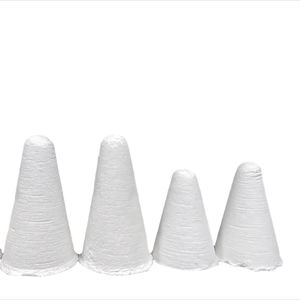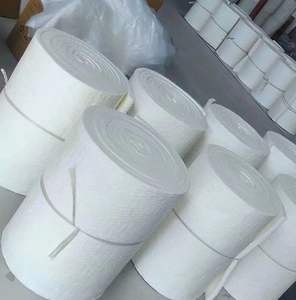Discover Premium Ceramic Products | Durability & Elegance United | Advanced Ceramics
1. Introduction
When you think of high-tech manufacturing, you might picture cleanrooms and robotic arms—but behind the scenes, some of the most demanding processes happen inside ultra-hot furnaces. One unsung hero in these environments is the silicon carbide crucible.

Unlike everyday ceramic dishes or kitchenware, this specialized container must endure temperatures above 2,000°C while resisting chemical attack, thermal shock, and mechanical wear. Its most fascinating application? Growing single crystals for semiconductors, LEDs, and aerospace optics.
2. The Crucible’s Role in Crystal Growth
In industries like semiconductor manufacturing, purity and structural perfection are non-negotiable. To grow large, defect-free crystals—such as sapphire (Al₂O₃) or silicon carbide itself—raw materials are melted and slowly cooled in a controlled environment. The container holding this molten mass is the crucible.
Here, the silicon carbide crucible shines. Its exceptional thermal conductivity ensures even heat distribution, while its high melting point (around 2,700°C) prevents deformation. More importantly, it doesn’t react with most molten oxides or carbides, preserving crystal purity.
3. Why Silicon Carbide Over Other Materials?
You might wonder: why not use boron carbide vs silicon carbide? While boron carbide is harder, it’s more brittle and prone to oxidation above 1,000°C. Silicon carbide, by contrast, forms a protective silica layer that enhances stability in air at extreme temperatures.
What about silicon nitride? Though silicon nitride ceramic components—like a silicon nitride crucible factory might produce—are excellent for moderate-temperature applications, they degrade in highly oxidizing or molten-salt environments. A silicon nitride ring or custom silicon nitride heat shield works well in engines or bearings, but not in crystal-pulling furnaces.

Silicon carbide also outperforms traditional refractories like alumina or graphite in longevity and contamination control—critical when producing high-purity silicon carbide for power electronics.
4. Real-World Use: Sapphire and SiC Crystal Production
One of the most demanding applications is the Verneuil or Czochralski process for sapphire growth. Here, aluminum oxide powder is melted in a silicon carbide crucible and drawn into a single-crystal boule. Any impurity from the crucible would ruin optical clarity or electrical properties.
Similarly, for silicon carbide wafer production—used in EV inverters and 5G infrastructure—the raw SiC powder is sublimated in a graphite furnace lined with silicon carbide crucibles and tubes. Components like silicon carbide thermocouple protection tubes and silicon carbide ceramic tubes for furnace use ensure precise temperature monitoring without contamination.
Even ancillary parts matter: silicon carbide burner nozzles, silicon carbide brick linings, and rbsic silicon carbide tile blocks help maintain the furnace’s thermal integrity over thousands of cycles.
5. Beyond the Crucible: Supporting Components

The ecosystem around crystal growth relies heavily on other silicon carbide ceramics. For instance, silicon carbide ceramic columns provide structural support inside furnaces, while silicon carbide discs and silicon carbide ceramic grinding discs are used to polish the final wafers.
Interestingly, while the market buzzes about high purity silicon nitride powder market trends for aerospace, silicon carbide remains the backbone of high-temperature industrial ceramics—not just in labs, but in mass production.
6. Misconceptions and Kitchenware Confusion
A quick note: despite keyword overlaps, a silicon carbide crucible has nothing to do with kitchen items like a silicon carbide ceramic baking dish, silicon carbide dinner ceramic plates, or silicon carbide ceramic butter dish. Those are typically marketing terms for stoneware or porcelain with no actual SiC content.
True silicon carbide ceramics are black, extremely hard, and not food-safe in raw form. So if you see ‘silicon carbide baking dish staub’ or ‘silicon carbide white ceramic plates,’ it’s likely a branding mix-up—not functional SiC.
7. Conclusion
In the world of advanced materials, the silicon carbide crucible is a quiet powerhouse. Its unmatched combination of thermal stability, chemical inertness, and mechanical strength makes it indispensable for growing the crystals that power our digital future.
From silicon carbide ceramic tubes in tube furnaces to rbsic silicon carbide tile blocks lining industrial reactors, this material enables technologies we rely on daily—proving that sometimes, the most critical innovations happen not on the surface, but deep inside a 2,000°C crucible.
Our Website founded on October 17, 2012, is a high-tech enterprise committed to the research and development, production, processing, sales and technical services of ceramic relative materials such as Why. Our products includes but not limited to Boron Carbide Ceramic Products, Boron Nitride Ceramic Products, Silicon Carbide Ceramic Products, Silicon Nitride Ceramic Products, Zirconium Dioxide Ceramic Products, etc. If you are interested, please feel free to contact us.
